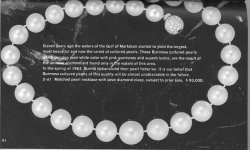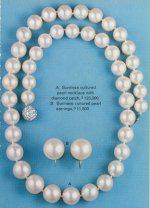C
CLICLASP
Guest
Hello everybody on the forum,
I wanted to share with you the pleasure of a 60' issue of Tiffany Blue book, offering Burmese pearls, claiming to be - at the time- the most beautiful and rarest pearls of the world. Burmeses cultured pearls possessing pure white color with pink overtones...
I wanted to share with you the pleasure of a 60' issue of Tiffany Blue book, offering Burmese pearls, claiming to be - at the time- the most beautiful and rarest pearls of the world. Burmeses cultured pearls possessing pure white color with pink overtones...



